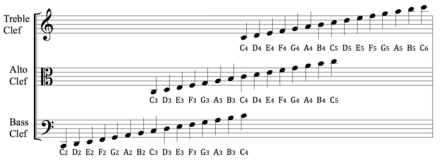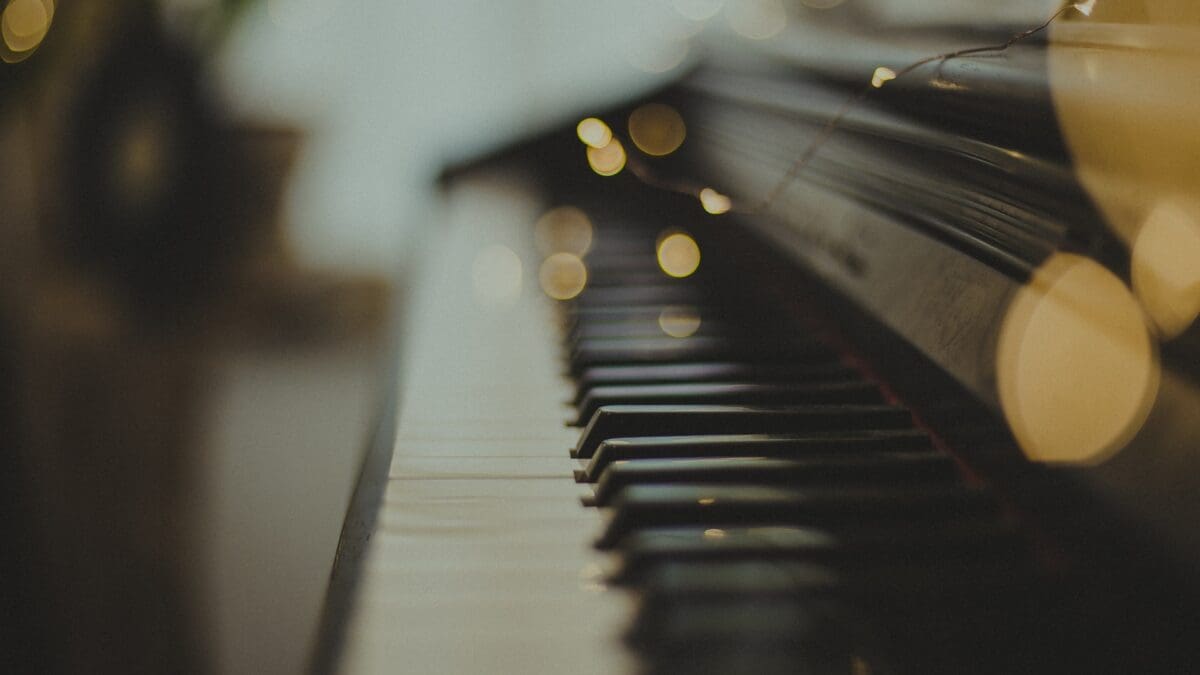In sheet music, the music symbols are used to describe the way a particular piece of music should be played.
That’s why sheet music is still essential for communicating how to play a piece of music.
Reading sheet music is on its way to becoming an overlooked skill in the modern musician’s toolkit. With so much technology available to compute, compose, and reproduce music digitally, reading is written off by most as unnecessary and archaic. This could not be further from the truth.
Reading music and understanding music symbols is a widely applicable skill that improves your cognition, musicianship, and knowledge of theory, and boosts your employability and toolkit to make it as a professional working musician.
Whether you’ve been playing by ear, using TAB for years, or are just starting out mixing and producing inside of a DAW, this guide will show you everything you need to know to get started reading notation and sheet music.
That’s why we’ve compiled a master list of music symbols you need to know to read sheet music.
What is Musical Notation?
If we understand music as a language, musical notation is the reading and writing side, while playing and listening to music is the speaking and comprehension side.
Notation is the same in every country, which allows musicians from all over the world to communicate with one another, regardless of their tongue, race, religion, and creed.
Why Learn to Read Music Symbols & Sheet Music?
If you are unsure if learning to read sheet music is worth the effort, here are a few benefits that might help you to commit!
1. It will make you a better overall musician. The writing process happens a lot faster and cheaper as you can create your own songs without the need for a studio or band.
2. It helps you to express yourself more freely and learn new music.
3. Improves communication with other musicians as it is easier to share notes and create music through the music sheet.
4. It gives you the ability to comprehend music written for other instruments. If you don’t know how to play an instrument which you would love to add to your song, the music symbols could help include more instruments and add melody to your tune.
5. It’s fun! Looking through the music sheets and creating is a unique experience that artists can share and make music in the most fun way.
The Basic Symbols of Musical Notation

Musical notation uses symbols to represent things like pitch, time, and expression.
Whoever wants to know and understand music probably dreams of learning sheet music, after all this is the most complete musical writing in existence. A musician can write great music without knowing how to create a music sheet or notes, but writing your melody is always a wonderful experience that every musician should have.
The problem is that learning music symbols through books is very complicated because the explanations are difficult to comprehend. Our goal is to help you learn how to write and read music sheets in the easiest way! We will explain everything now and show how much you will benefit from this knowledge.
Each music sheet records a series of harmonic, rhythmic and melodic ideas. You will possibly remember the moment when you learned the alphabet. Just as you have memorized the sound of each letter, you will also need to memorize the way each note is represented on paper. In the end, you will be mastering a new language.
Let’s start!
Clefs and Note Names

Each line and space of the staff corresponds to a musical pitch, which is determined by the clef. Music notes are named after the first seven letters of the alphabet: A, B, C, D, E, F, G. The two clefs that are primarily used are the treble clef and bass clef.
The treble clef is also known as the ‘G-clef’ and is one of the most recognizable music symbols. This is because the curve in the clef encircles the second line of the staff, which is called a ‘G’ on the treble clef staff. The treble clef is used by instruments that have higher registers, like the flute, violin and trumpet. The higher registers of the piano are notated in the treble clef as well. For beginning pianists, notes on the treble clef staff will be played with the right hand.
The note names on the spaces of the treble clef spell out F-A-C-E.
FACE

The note names on the lines of the treble clef are E-G-B-D-F. Some mnemonics to help you remember this is “Every Good Boy Does Fine”, “Every Good Boy Deserves Fudge”, or “Elvis’s Guitar Broke Down Friday”. There are several ways to remember these simple notes, it is a rhyme that is the basis of many songs.
EGBDF

The bass clef is also known as the ‘F-Clef’ because the fourth line of the staff passes between the two dots. The note located on this line of the bass clef staff is an ‘F’. In early music notation, hundreds of years ago, this clef sometimes moved around. The ‘F’ was located on whichever line passed between the two dots. In other words, the F might have been on the third line instead of the fourth line! Today, the ‘F-Clef’ does not move around and is known interchangeably as the bass clef.
Ledger Lines

Ledger lines are important music symbols used to notate pitches below or above the regular lines and spaces of the staff. ‘Middle C’, one of the first notes beginning music students learn, is located on a ledger line between the bass clef and treble clef staff. You can see how it is notated in both of these clefs in the examples below.
Ledger lines are used sometimes in music notation because it makes the notes easier to read than constantly changing between clefs. There can be an infinite number of ledger lines above or below any staff, but it can be difficult to read the music if there are more than three. At that point, it is usually wise to change clefs. For example, writing the following on the treble clef staff:
Key Signatures

In many cases, a composer or arranger may wish for certain notes to be flat or sharp throughout a whole piece unless otherwise indicated by a natural sign or other accidentals. They will communicate this in sheet music by utilizing a key signature. A key signature defines the key of the music and thus what flats or sharps are supposed to be played throughout the piece.
This helps reduce the need for accidentals (i.e. placing a flat or sharp before a note in the music every time it occurs). Now, there are some important rules to know about key signatures and music symbols. A key signature is made up of sharps or flats, not a combination of the two. Flats and sharps are added in a particular order, as outlined below.
Flats in the key signature lower the pitch of notes on the corresponding line or space by a half-step (or semitone). This transfers to all octaves. Different keys are defined by the number of flats (or sharps) in the key signature, starting with the leftmost and moving to the right.
Flats are added to a key signature in the following order: BEADGCF. For example, if there is only one flat in the key signature, it will always be B-flat. If there are three flats, they will always be B-flat, E-flat and A-flat, and so on.
Closing Thought on Music Symbols
There are many ways to learn the beauty of writing music, creating melodies and producing a unique music sheet. Become the artist that you have always wanted while producing amazing music, with these simple notes you can create the base of the greatest songs of all time and become the artist you always wanted to be.










